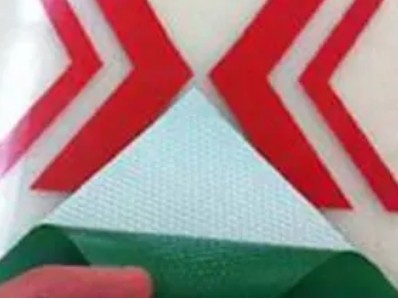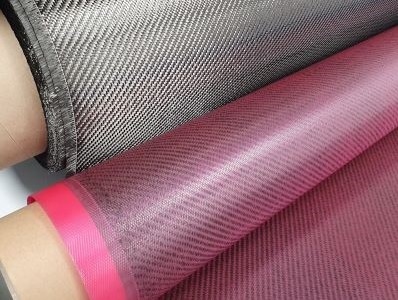Film Adhesives
Axiom announces new website launch Jun 3rd
Axiom Materials provides superior film adhesive solutions that deliver consistency every time, along with an endless array of customization options. Whether your project requires a simple epoxy film adhesive or a complex, customized, high temperature material, Axiom is your trusted partner.
You can choose from Axiom’s standard product offerings or customize a highly specific product to meet your project needs. Axiom provides end-to-end client support and we pride ourselves on the opportunity to serve our clients. Our Team is passionate about the industry and committed to providing best-in-class-support that begins with our initial consultation.
Axiom’s epoxy film adhesives are some of our most widely used products. These high-performance adhesive solutions are designed for applications that require a lot of toughness. They come in a range of choices and product applications, allowing you to optimize the level of toughness, heat resistance, and durability that you need. Epoxy film adhesives are generally supported, but also come in unsupported variations for specialized applications.
Axiom’s permanent structural bonds can withstand temperatures from -67°F to 700°F. Our materials are designed to stand up to high temperatures and harsh chemical environments. Even our low-temperature materials hold up against some of the roughest wear and tear. Our higher-temperature materials are ready to withstand combustion engines, high speeds, hot-burning fuels, and more. Furthermore, our adhesives can withstand these elements even when they are maximized by hot, humid, and otherwise harsh weather conditions.
Multiple types of bonding: Metal to metal, composite to metal, wood to composite, honeycomb sandwich bonding, polymer foam panel core bonding, ceramic bonding, and tile bonding.
Processing: Axiom provides variable temperature cure products from 160°F to 350°F. Our adhesives can be used in press applications, autoclave processing, VBO OOA applications, and trapped molding applications.
Cured bond lines: Our cured bond lines exhibit a combination of high strength and resistance to industrial fluids.
At Axiom Materials, we are committed to building adhesive solutions that are tough enough to stand up to harsh elements and high temperatures. Adhesive solutions are flexible enough to provide you with the exact option that you need.
If you have any questions about our Film Adhesives product line – please let us know. We are readily available to discuss your application, learn more about your needs, and address any questions.
| Product | Description | Applications | Form | Matrix Color | Max. Short Term Use Temp, °F (°C) | Max. Continuous Operating Temp, °F (°C) | Comments |
|---|---|---|---|---|---|---|---|
| AX-2114 | High Performance Toughened Epoxy Film Adhesive | High performance / high peel bonding applications for metallic and composite substrates | Adhesive film, supported | Off-White | 250°F (121°C) | 200°F (93°C) | Also available unsupported. Color variations available. |
| AX-2115 | Enhanced Peel, High Performance Toughened Epoxy Film Adhesive | High performance / high peel bonding applications for metallic, composite, and thermoplastic substrates | Adhesive film, supported | Red | 250°F (121°C) | 200°F (93°C) | Also available unsupported. Color variations available. |
| AX-2116 | Highest Performance Toughened Epoxy Film Adhesive | Aerospace grade bonding applications for metallic and composite substrates | Adhesive film, supported | Off-white | 250°F (121°C) | 250°F (121°C) | Also available unsupported. |
| AX-2121 | Variable Temp. Cure Epoxy Film Adhesive | Low temperature curing / prototype development / snap curing | Adhesive film, supported | Cream | 160°F (71°C) | 250°F (121°C) | Various colors available. Also available unsupported. |
| AX-2130 | High Temperature, Toughened Epoxy Film Adhesive | High temperature metal / metal or composite bonding, honeycomb bonding | Adhesive film, supported | Blue | 325°F (163°C) | 350°F (177°C) | Also available unsupported. Color variations available. |
| AX-2140 | Epoxy Surfacing & Finishing Film Adhesive | Surface finishing of composite parts. Co-cure with prepreg to reduce pitting and smooth part surfaces. Eliminates fill, fair, and repair | Adhesive film, supported | Grey | 250°F (121°C) or 350°F (177°C) | 250°F (121°C) | Color variations available. May be consolidated with lightning strike materials. Low temperature cure available. |
| AX-2150 | Modified Thermosetting Film Adhesive | Low weight / medium load bonding applications. Honeycomb peel strength improvement | Lightweight adhesive film, unsupported | Light Blue | 250°F (121°C) or 350°F (177°C) | 250°F (121°C) | Heavier weights and supported versions available. |
| AX-2151 | PVB Phenolic Ballistic Film Adhesive | Bonding promotion and high energy load transfer between fabrics for ballistic applications | Adhesive film, unsupported | Green | 250°F (121°C) | 200°F (93°C) | Typically used in aramid ballistic laminates. |
| AX-2190 | Foaming Epoxy Core Splice Adhesive | Core splicing and edge-bonding of honeycomb cores and paneling | Medium weight adhesive film, small sheets | Light Orange | 250°F (121°C) or 350°F (177°C) | 300°F (149°C) | Available in a variety of forms. Flame retardant versions are available. |
"*" indicates required fields

CMC prepregs are used for parts requiring thermal performance up to 2200°F

Specially formulated resin systems include epoxy, phenolic, polyester, cyanate ester, vinyl ester and polyimide.